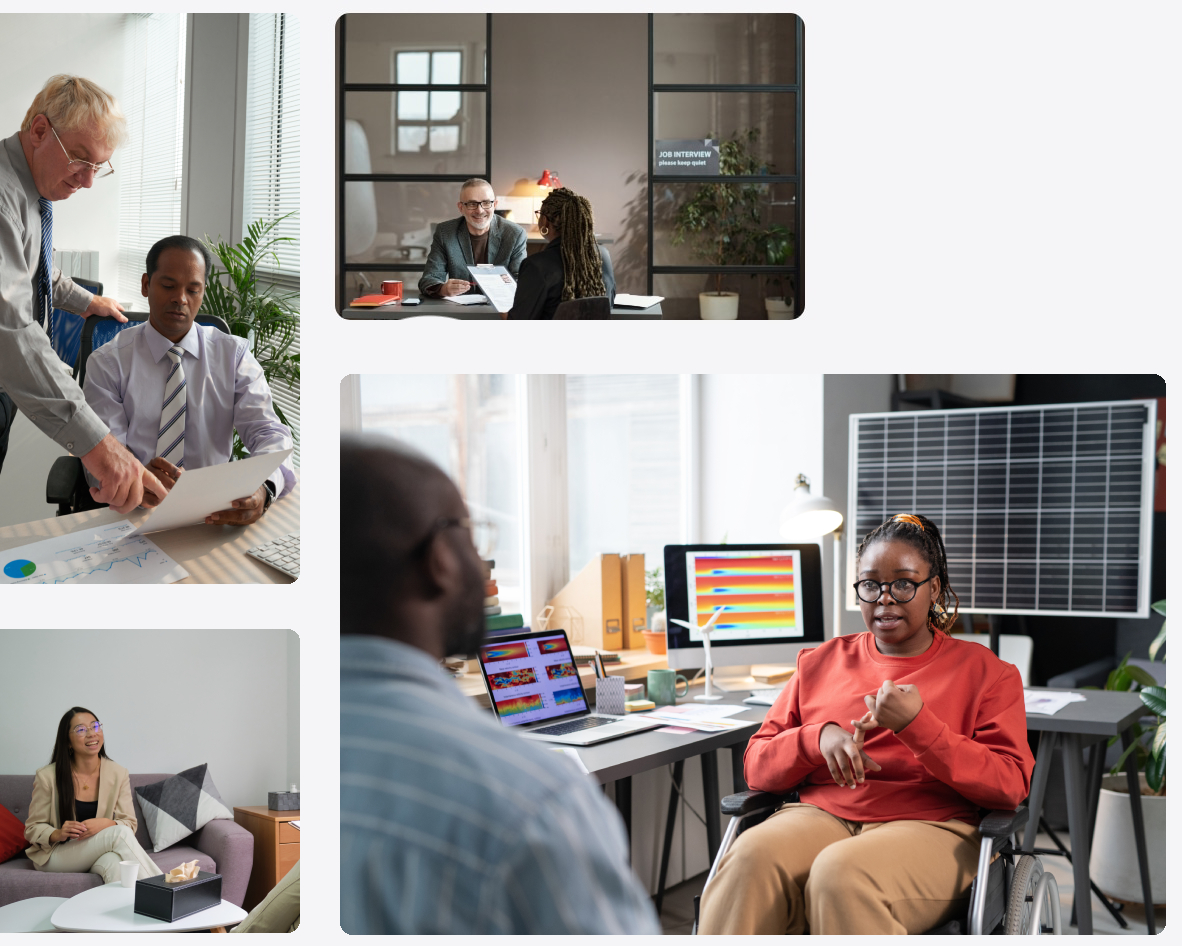Here at atwsolutions®, we provide one-to-one employment support staff (Support Workers) to individuals with a range of disabilities throughout the UK. This support is funded through the Department for Work and Pensions’ (DWP) Access to Work scheme.
As the only specialist employment support staff provider led and operated by people with disabilities, we have a deep-seated understanding and knowledge of the unique challenges faced by those with disabilities who are new to the workplace, as well as those who are long established. Our experience in this specialist field means that we can cater for a variety of employment types Including self-employment, home-based workers, hybrid workers, and those who travel for work. We are also highly experienced in providing bespoke support to a range of clients with a broad spectrum of needs and requirements such as physical, hidden, and sensory disabilities.

The support we offer is client-led and designed to empower the client to achieve their goals and meet the requirements of their job role.
Examples of the type of support we offer include:
When you work with atwsolutions®, you will be supplied with a bespoke support package designed around your needs alongside a competitive quote.
You will receive:
Whether you are a new claimant, need to complete the renewal of an existing claim, have experienced a change in circumstances, or nee to appeal an unfavourable decision, atwsolutions® is here to help, so get in touch for a free, no obligation consultation to find out how we can support and empower you to achieve your employment goals.